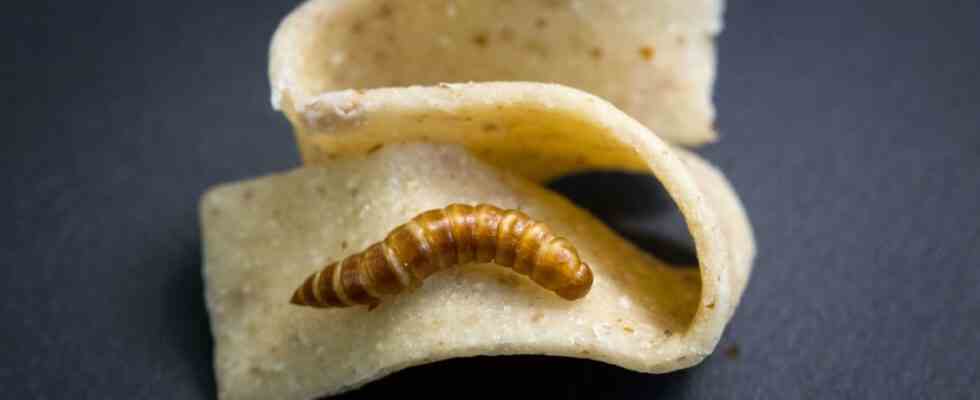It may be that it is everyday life for billions of people, it may be that the future tastes like this. But at local dining tables, insects on the plate usually trigger disgust, maybe with some thrills.
In the EU, it wasn’t that easy to get hold of edible insects until the summer of 2021, apart from breeding them yourself. But then the mealworm was the first to clear the approval hurdles of the European Novel Food Regulation. The European migratory locust followed in November 2021 and the house cricket just over a year ago. Two more products will be added this week: The larvae of the grain mold beetle Alphitobius diaperinus in various preparation forms, “paste-like” or “ground”, as well as the house cricket now also as a “partially defatted powder” can now be traded and processed in Europe. According to the European Commission, there are currently eight other applications for the approval of insects as food.
Noodles, baked goods or sweets with intentional insect content have not been available in German supermarkets for long, if you can find them at all. “Until now, these products have not really reached consumers,” says Daniela Krehl from the Food and Nutrition Department of the Bavarian Consumer Center. With the new products, which would also be suitable as an additive for baked goods at the bakery or as an admixture for meat substitutes, there is now a growing fear that insects are being foisted on consumers, says Krehl. But the expert expects the opposite – that products with insect content are specifically advertised.
When it comes to food, most insects are not demanding, organic waste is just fine for them
However, were missing in 2020 in a market check by consumer advice centers 32 tested products often contain warnings for allergy sufferers. When eating insects, people with allergies to house dust mites, crustaceans, shellfish or molluscs can have cross-reactions, says Krehl. “However, there is still no experience as to how strong the allergic reactions to insect components can be.”
Apart from the allergy potential, the consumer advocate considers insects to be valuable for human nutrition: “High-quality protein, rich in minerals, important fatty acids that the human body cannot produce itself.” The Food and Agriculture Organization (FAO) also recommends insects as high quality Protein source, especially an environmentally friendly one at that. According to the FAO, it only takes about two kilograms of feed to breed one kilo of grasshoppers. As far as the composition of the food is concerned, most insects are not demanding, organic waste is just fine for them. Insects can also be used as animal feed. Only recently did experts calculate in the science journal Science Beforethat even the entire feed production could be switched to insects, with enormous annual growth rates and corresponding influence on the economy.
Consumer advocate Krehl knows the advantages and knows the taste. She’s tried her way through an entire insect menu with grilled crickets and ice cream with caramelized worms. “I also eat shrimp and don’t see a big difference.” It remains to be seen “whether the Europeans can control the disgust effect.”

